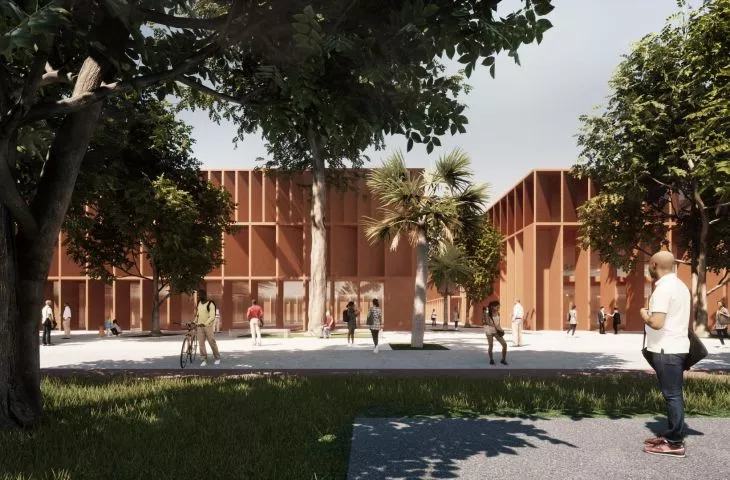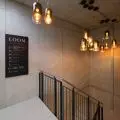Kalemie today
According to a planning study carried out in 1955, the city was dominated by extensive development, with a clear division between the center located in the vicinity of the port and the railroad station. Industry, along with residential areas for workers, was located on the north bank of the Lukuga River.
With the dynamic development of the city, the structure of its buildings changed drastically. First of all, the hills to the west of the existing buildings were settled. The hills were cleared and the land was leveled for spontaneous development of enormous density. The infrastructure did not follow along with the development, so the only transportation service was provided by roads connecting the center with the villas or restaurants that once existed, located in selected valuable locations. Over time, some of these roads also disappeared under the buildings. Thus, in most cases, only pedestrian communication along haphazard, inconvenient paths is possible. There are no sewer, water or power networks in the settlements. The devastated network of storm sewers and the stripping of the land of vegetation under the prevailing climatic conditions causes notorious leaching of land masses, further hampering housing conditions, the study's authors write .
camp in the city
© OPEN architects
At the same time, the city is currently developing on a flat and friendly site near the airport, stadium and hospital. New residential development is being built in delineated quarters that are possible to handle transportation and infrastructure. This is the right direction, allowing relatively easy organization of infrastructure and use of natural resources without environmental degradation. However, as the authors of the project write, there is no public transportation in the city, the first line of city buses is only being planned, and the primary means of transportation are a small number of cars, cabs and mopeds.
moto cab enabling transportation in the city
© OPEN architects
what will change?
Most important for the designers at OPEN architects was: identifying the causes and a remedial plan related to the devastation of the environment and the rising water table, preparing a proposal for the revitalization of the "old" city, in particular, improving transportation andimprovement of living conditions in the hills, analysis of the basic social, natural and economic needs and the possibility of their implementation within the framework of the New Kalemie project, and identification of an appropriate model of the city, taking into account the socio-cultural and economic conditions of both the present and future Kalemie.
New Kalemie, bird's eye view
© OPEN architects
In their concept, the architects proposed, among other things, clearing past traffic routes, constructing a ring road, relocating the current central market, and helping residents occupying makeshift houses.
The ownership status of the land in the hills is unregulated and the nature of the development is makeshift. The houses consist of thin walls made of locally baked bricks and lightweight tin roofs and are devoid of any internal installations. They are not connected to any infrastructure. Residents obtain water from wells, often several hundred meters away from the houses. This is mainly due to the dynamic and spontaneous development and the economic situation of the residents. Taking this into account, it is necessary to develop a long-term resettlement process, supported economically by the relevant institutions, to allow residents from the hills to live in safety and dignity, the project's authors write.
The agricultural traditions of the residents are also important in the study developed by designers from OPEN Architects.
Kalemie residents have long practiced what northern societies are maturing or returning to, namely, being largely self-sufficient. This is a value that should be nurtured and encouraged through proper planning decisions, allowing the use of fertile land without the need for economically inefficient trips "out of town," but also without abandoning high intensity development, reducing the economically and socially unjustified "dilution" of the city through extensive development, the designers add.
























































































































